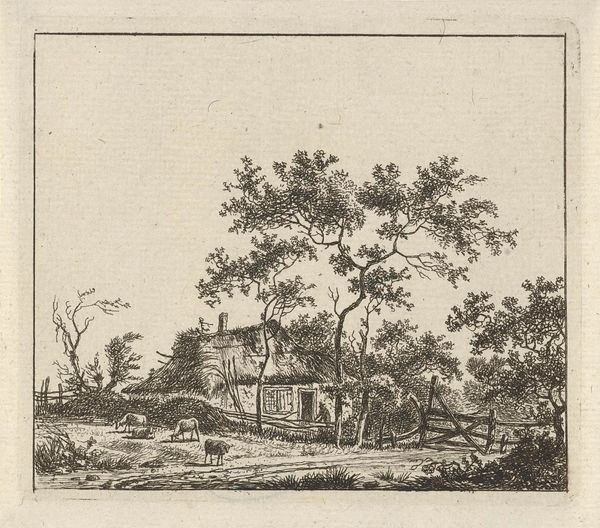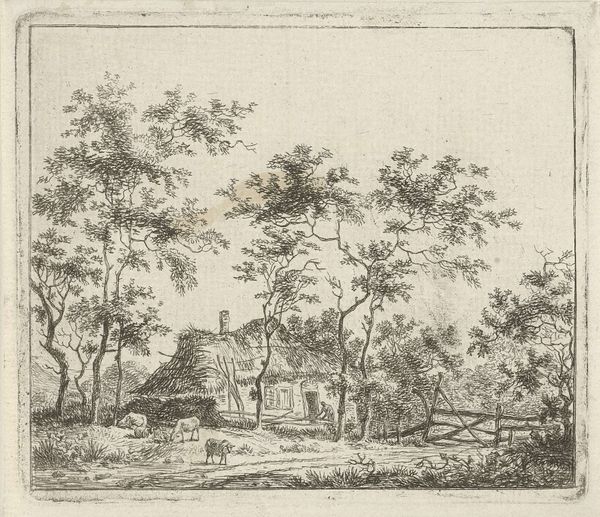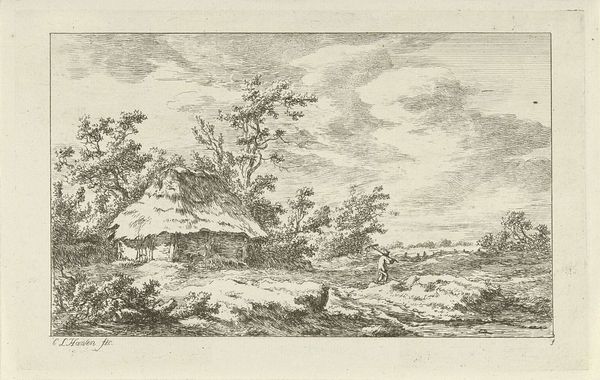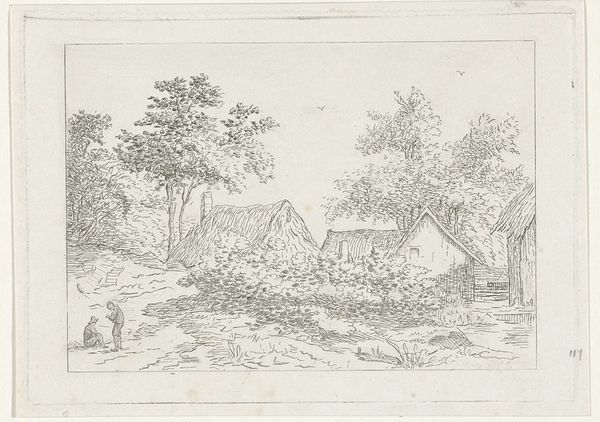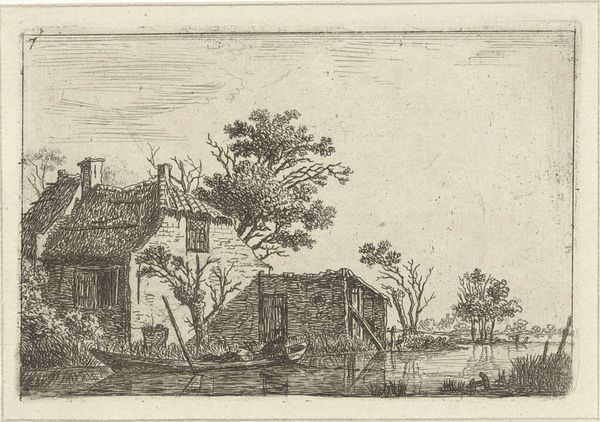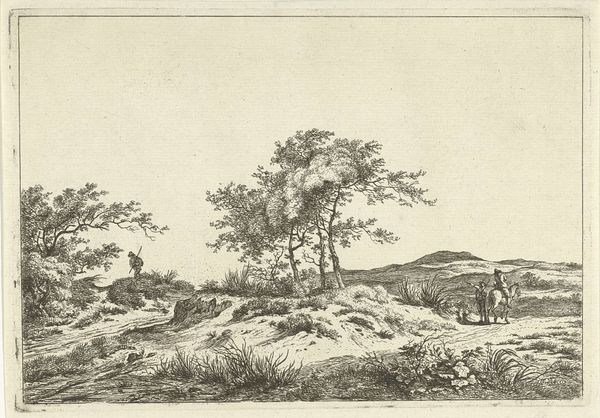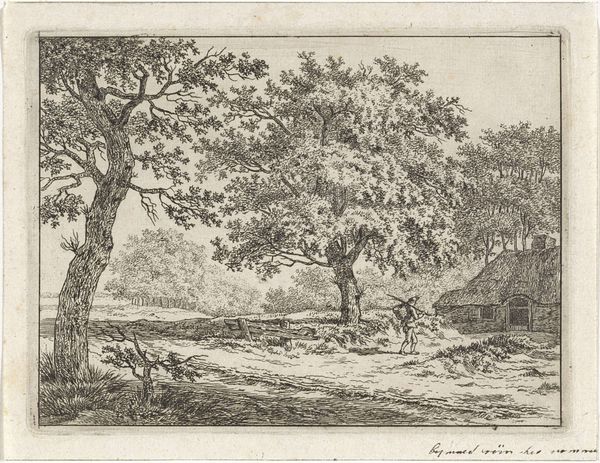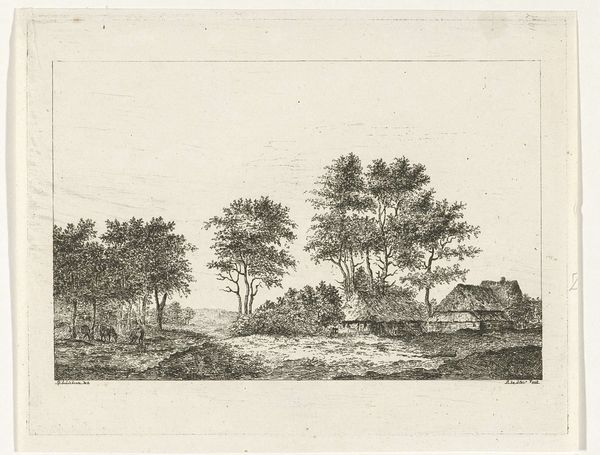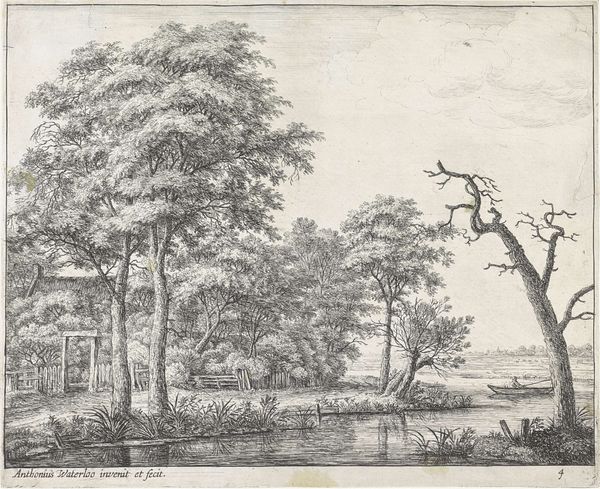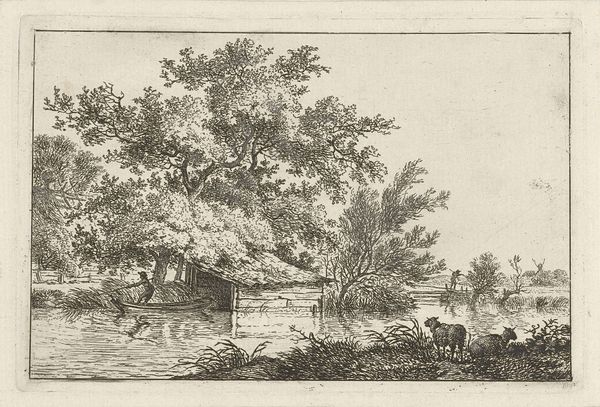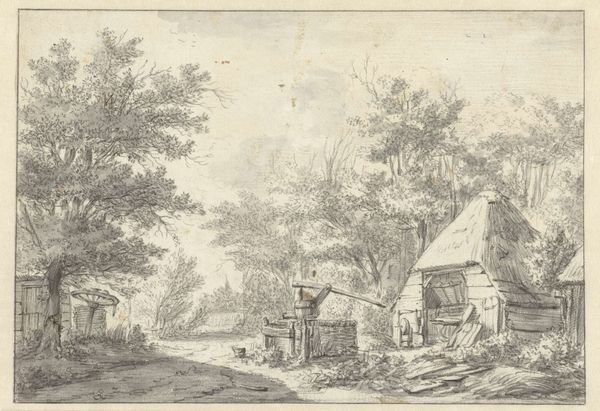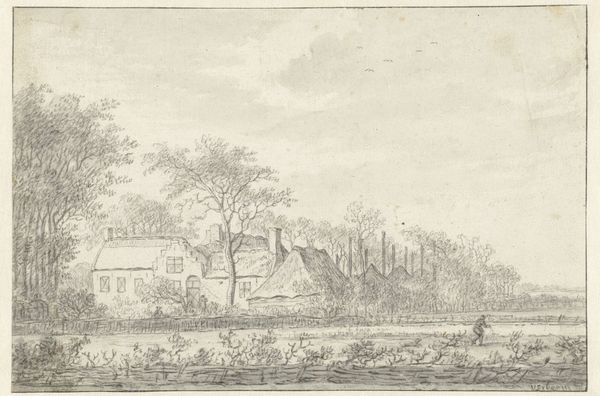
etching
#
etching
#
landscape
#
etching
#
genre-painting
#
realism
Dimensions: height 106 mm, width 125 mm
Copyright: Rijks Museum: Open Domain
Curator: Here we have Hermanus Fock’s "Farmhouse with Four Sheep," dating roughly from 1781 to 1822. It’s currently held here at the Rijksmuseum. What strikes you first about it? Editor: There’s a quiet stillness to it, wouldn’t you agree? It’s deceptively simple, this arrangement of lines; yet it evokes such a strong sense of rural calm. It feels quite intimate, the landscape pressed so close. Curator: Well, intimate may be the intention, as etching allowed for a relatively democratic approach to printmaking. Look at the lines. It uses hatching, layering them to describe forms while creating tonal depth. How might these factors indicate a shift away from aristocratic patrons toward a broader middle-class consumption? Editor: I appreciate your point, certainly. But even without the historical backdrop, consider the composition. The eye is led diagonally from the lower left, following the path to the house, and upwards, into the canopy. The distribution of the etching strokes directs our vision throughout the work. The contrast enhances the mood. Curator: True enough. The details do reflect a broader market. Notice how Fock includes recognizable elements of Dutch rural life: thatched roof, grazing sheep, simple wooden fencing, and most essentially the farmer seated outside. These visual tropes contribute to an idyllic view of the working class and invite city-dwelling patrons to imagine rural simplicity, even leisure. Editor: Precisely. The thatched roof in itself creates an interesting pattern on the upper part of the house. The visual elements certainly come together and guide the viewer through a familiar bucolic scene. But does it have to be class-related? Perhaps he was simply celebrating what was in front of him. Curator: Not entirely, I believe. He could simultaneously embrace genre painting while targeting his market. The etching process itself—the time invested, the material constraints, its reproductive capabilities, the relative low cost—all enabled a democratized art world. Editor: A compelling observation. Focusing on those technical aspects really does unveil an economic and social story alongside the art object itself. Curator: Exactly! Thinking of etching less as an art form and more as a material record—a cultural and technological artifact that reflects historical forces at work—opens a whole new realm for appreciating the history it contains. Editor: Fair enough. It’s given me a great deal to reconsider, even from a formal perspective.
Comments
No comments
Be the first to comment and join the conversation on the ultimate creative platform.
